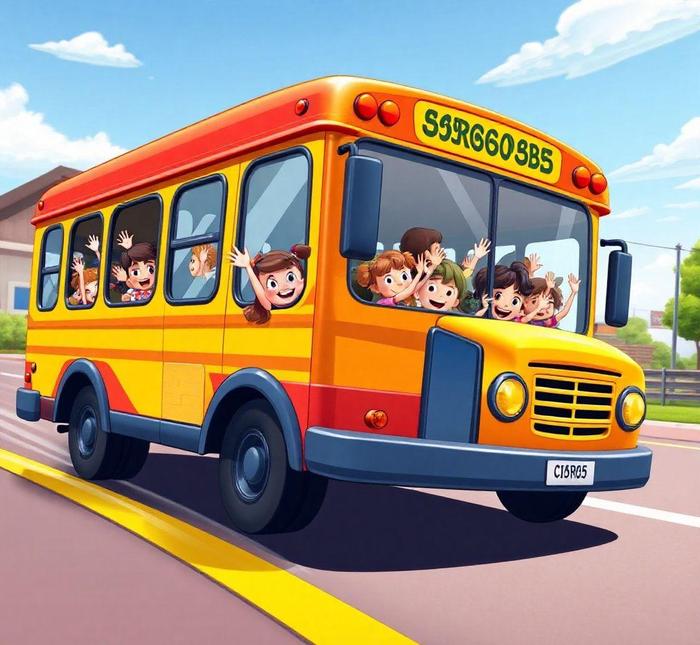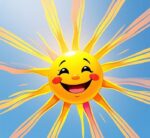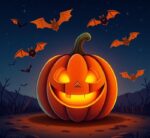- You are here:
- Home »
- words
- » Kindergarten Words That Start With C [LIST]

Kindergarten Words That Start With C [LIST]
Teaching young children new vocabulary is an essential part of their early education, and focusing on words that start with specific letters can help create a strong foundation. The letter ‘C’ is a versatile and fun starting point, offering a variety of words that children can easily relate to. From animals like ‘cat’ and ‘cow’ to everyday objects like ‘cup’ and “car”, the ‘C’ sound appears frequently in words that young learners encounter. Introducing these words early on can foster language development, improve phonemic awareness, and build confidence in communication.
In this article, we will explore a comprehensive list of kindergarten words that begin with the letter “C”. These words span various categories, including animals, colors, actions, and common objects, making them not only educational but also engaging for young children. By using fun and interactive methods to teach these words, educators and parents can help children develop a love for language while strengthening their vocabulary and comprehension skills.
Kindergarten Words That Start With C
1. cat
A cat is a small, furry animal that often lives in homes as a pet. Cats can be playful and are known for their ability to jump and climb.
Examples
- The cat is sleeping on the couch.
- My cat has soft fur and likes to play.
2. car
A car is a vehicle that is used for traveling from one place to another. Cars usually have four wheels and are powered by an engine.
Examples
- We ride in the car to go to the store.
- My car is blue, and it has four wheels.
3. cup
A cup is a small container with a handle, used for drinking liquids like water, juice, or tea.
Examples
- I drink my juice from a cup.
- She gave me a cup of hot chocolate.
4. cookie
A cookie is a sweet, baked food, often round, made with ingredients like flour, sugar, and butter. It may have chocolate chips or other flavorings.
Examples
- I love eating chocolate chip cookies.
- Mom baked a batch of fresh cookies.
5. cake
Cake is a sweet dessert made from flour, sugar, eggs, and butter, often baked in an oven. It can come in many shapes and flavors.
Examples
- We had cake at the party for my birthday.
- The cake was covered with colorful frosting.
6. cloud
A cloud is a mass of tiny water droplets or ice crystals in the sky. Clouds can be fluffy and white or dark and stormy.
Examples
- The cloud looks like a fluffy cotton ball.
- We saw a cloud that looked like a dragon in the sky.
7. circle
A circle is a round shape with no corners. It is formed when all points on the edge are the same distance from the center.
Examples
- I drew a circle on the paper.
- The children held hands in a circle to play a game.
8. cow
A cow is a large animal that is often raised for its milk, meat, or leather. Cows are typically found on farms and eat grass.
Examples
- The cow is eating grass in the field.
- We saw a big brown cow at the farm.
9. carrot
A carrot is a long, orange vegetable that grows underground. It is sweet and crunchy and is often eaten raw or cooked.
Examples
- I like to eat carrots with my lunch.
- The rabbit ate a big orange carrot.
10. cupcake
A cupcake is a small cake, usually baked in a paper liner, and often topped with frosting. It is perfect for a single serving.
Examples
- She baked cupcakes with pink frosting for the party.
- My favorite flavor of cupcake is vanilla with chocolate chips.
11. clown
A clown is a person who wears funny makeup, clothes, and often performs tricks to entertain people, especially at parties or circuses.
Examples
- The clown wore a big red nose and funny clothes.
- At the circus, the clown made everyone laugh.
12. coat
A coat is a piece of clothing that is worn to keep warm in cold weather. It usually has long sleeves and is made from thicker materials.
Examples
- I wore a warm coat because it was cold outside.
- She put on her coat before going to school.
13. chair
A chair is a piece of furniture designed for sitting. It typically has a seat, backrest, and four legs.
Examples
- Please sit in the chair at the table.
- I put my backpack on the chair.
14. cheese
Cheese is a dairy product made from milk. It comes in many varieties, including cheddar, mozzarella, and Swiss.
Examples
- I like to eat cheese with my crackers.
- The pizza is topped with lots of cheese.
15. chicken
A chicken is a bird that is raised for its eggs and meat. It can also be a pet or part of a farm.
Examples
- The chicken laid an egg.
- I had chicken for dinner last night.
16. coin
A coin is a small, round piece of metal used as money. It often has a picture or number on it and is used to buy things.
Examples
- I put a coin in the piggy bank.
- The coin was shiny and gold.
17. crayon
A crayon is a stick of colored wax used for drawing or coloring. Crayons come in many different colors and are often used by children.
Examples
- I like to color with my crayons.
- The drawing is full of bright colors from my crayons.
18. cupboard
A cupboard is a small storage space with shelves, often used for storing dishes, food, or other household items.
Examples
- The plates are in the cupboard.
- I found my favorite snack in the kitchen cupboard.
19. candy
Candy is a sweet food made from sugar, chocolate, or other sweet ingredients. It is usually eaten as a treat or snack.
Examples
- I love eating candy after dinner.
- We bought some candy at the store for Halloween.
20. clothes
Clothes are items of clothing worn on the body to cover or protect it. They come in many types, such as shirts, pants, dresses, and jackets.
Examples
- I put on my clothes before going to school.
- Her clothes were bright and colorful.
21. comb
A comb is a tool used to smooth and arrange hair. It has thin teeth and is often made of plastic or wood.
Examples
- I used a comb to fix my hair.
- She ran the comb through her hair to untangle it.
22. cloudy
Cloudy describes the sky when it is covered with clouds. A cloudy day often means the weather is overcast or rainy.
Examples
- The sky is cloudy, and it might rain later.
- It was a cloudy day, and the sun was hidden.
23. corner
A corner is where two walls or lines meet. It forms a 90-degree angle, and it can also refer to the place where two roads meet.
Examples
- I hid behind the corner of the house.
- The cat sat in the corner of the room.
24. cowboy
A cowboy is a person who works with cattle, often riding horses and herding animals. They are known for wearing hats, boots, and western-style clothing.
Examples
- The cowboy wore a big hat and boots.
- He rode his horse like a real cowboy.
25. carpet
A carpet is a soft covering for a floor. It can be made of fabric, wool, or synthetic materials and comes in different colors and patterns.
Examples
- The carpet in the living room is soft and colorful.
- We need to clean the carpet because it’s dirty.
26. castle
A castle is a large, strong building with high walls and towers, often built in the past for kings or queens. It can also refer to a toy or structure made from sand.
Examples
- The princess lived in a big castle.
- We built a sandcastle at the beach.
27. creek
A creek is a small stream or narrow body of water that flows through the land. It is smaller than a river but can still be a fun place to explore.
Examples
- We went to the creek to play in the water.
- The creek ran through the forest, bubbling over the rocks.
28. clap
To clap means to strike your hands together to make a sound. People clap to show appreciation or to keep rhythm.
Examples
- We clapped our hands to the music.
- The children clapped after the play ended.
29. caterpillar
A caterpillar is the larval stage of a butterfly or moth. It has a long, segmented body and often eats leaves before it becomes a pupa.
Examples
- The caterpillar was eating a leaf.
- We watched the caterpillar turn into a butterfly.
30. chime
A chime is a ringing sound made by a bell or other instrument. It is often heard in clocks or church bells.
Examples
- The bell chimes every hour.
- We heard the chime of the church bell from a distance.
31. clover
A clover is a small, green plant with three or four leaves. It is often found in fields or lawns and is sometimes considered lucky.
Examples
- I found a four-leaf clover in the grass.
- The clover was green and smelled fresh.
32. cone
A cone is a shape with a pointed top and a flat base. It can also refer to a cone-shaped object, such as an ice cream cone or a traffic cone.
Examples
- I had an ice cream cone at the park.
- The traffic cone was orange and placed on the road.
33. clothesline
A clothesline is a wire or rope where clothes are hung to dry. It is often found outside and used to air-dry laundry.
Examples
- Mom hung the wet laundry on the clothesline to dry.
- The clothesline was full of bright clothes blowing in the wind.
Historical Context

The selection of words used in early childhood education, particularly in the kindergarten classroom, is not a random process. It is deeply influenced by historical, cultural, and linguistic developments over centuries. In the case of words that begin with the letter "C," there is a fascinating journey that traces the evolution of language, as well as the ways societies have chosen to introduce and prioritize vocabulary for young learners.
Historically, the alphabet itself has played an important role in the development of language instruction. The letter "C," which originates from the Latin alphabet, has roots that extend back to the ancient Phoenician script. In the context of early childhood education, words starting with "C" have become important teaching tools due to their simplicity, phonetic clarity, and prevalence in everyday life. Terms such as "cat," "cup," and "car" are not only easily recognizable to young children but are also tied to objects and concepts within their immediate environments.
Moreover, as formal education systems began to take shape in Europe during the 17th and 18th centuries, educators realized the importance of a systematic approach to vocabulary building. The development of primers, textbooks, and the famous "alphabet books" of the 19th century ensured that each letter of the alphabet—particularly the common consonants like "C"—was highlighted through repetition and association. During this period, words starting with "C" like "cow," "cake," and "church" were frequently included because they related to familiar aspects of daily life in agrarian societies, which dominated the European landscape at the time.
In the 20th century, with the advent of progressive education methods and the growing understanding of child psychology, language instruction became more refined. The inclusion of words starting with "C" was no longer purely a matter of simple repetition or rote memorization. Instead, educators considered the developmental stages of children’s linguistic abilities. This historical shift marked a move toward integrating both functional and imaginative vocabulary, fostering not just communication skills but also cognitive growth and creativity.
Word Origins And Etymology
The origins and etymology of words starting with the letter "C" are as diverse as the cultures and languages from which they derive. Many of these words trace their roots back to ancient languages, and understanding their linguistic histories can offer fascinating insights into how language has evolved and how meanings have shifted over time.
Take, for example, the word "cat," which is one of the most common words for young learners. Its origin comes from the Late Latin word cattus, which in turn was derived from the Greek katta. The word katta was likely borrowed from Egyptian, where the domesticated cat was revered, and its name caute or caut was used to refer to the feline species. The connection between the letter "C" and "cat" is thus part of a long linguistic journey, influenced by ancient civilizations’ interaction with animals and the way they categorized the world around them.
Similarly, "cup" comes from the Old English cuppe, which was derived from the Latin word cuppa, meaning a small container or vessel. The word "cup" reflects the practical needs of early societies in terms of drinking and serving liquids. It shows how the basic needs of sustenance, such as drinking, formed the foundation for many of the words that would become essential parts of the lexicon, especially in a child’s early vocabulary.
Another example is "car," which evolved from the Latin word carrus, meaning a wheeled vehicle. This word was brought into Old French as carre, which referred to a cart or a wagon. Over time, the word "car" transformed in English into the modern sense we associate with automobiles. This transition from a simple cart to a complex machine exemplifies how a word’s meaning can change over centuries while maintaining a connection to its original function.
The rich diversity of word origins in the "C" category—spanning from natural phenomena to human-made inventions—demonstrates the adaptability and dynamism of language. These words, while seemingly simple to a kindergartener, carry layers of history and cultural significance that reflect the needs, innovations, and relationships of past generations.
Common Misconceptions
As children begin their journey of language acquisition, they often encounter certain challenges in understanding and using words. The letter "C" can present a particularly interesting case, as it is associated with several different sounds, which can lead to misconceptions about how words should be pronounced, spelled, or used.
One of the most common misconceptions involves the pronunciation of "C." In English, the letter "C" can produce two primary sounds: the hard "C" (as in "cat" or "cup") and the soft "C" (as in "circle" or "city"). This duality can confuse young learners, especially those in kindergarten, who may struggle to predict when each sound should be used. The inconsistency of English pronunciation is a challenge not just for children but also for non-native speakers, who might apply the same rules to all "C" words.
Another misconception arises with the use of "C" in words that are similar in meaning but differ in spelling. For instance, words like "ceiling" and "sealing," or "cereal" and "serial," can cause confusion. These words may look similar in writing but are pronounced differently and have entirely different meanings. Kindergarten students are often introduced to these words early in their education, and understanding the differences can be difficult.
In addition, there is often confusion regarding the use of "C" in phonics instruction. For example, some phonics systems introduce the letter "C" with words like "cat" and "cup" to reinforce the hard "C" sound. However, once children encounter words like "cell" or "cymbal," which use a soft "C" or a "C" that makes no sound at all, it can be perplexing. Teachers often have to navigate these exceptions carefully, explaining how context and specific word origins can determine the pronunciation and meaning of words.
Lastly, there is sometimes a misconception about which "C" words should be introduced in the early stages of reading. Because the letter "C" can start a variety of words, from objects ("cat," "car") to concepts ("cloud," "circle"), determining which words are most essential for kindergarten learners can be tricky. While "cat" and "cup" are common choices, some educators might focus on more abstract words like "create" or "celebrate," which might be challenging for young learners to understand without a more developed vocabulary and conceptual framework.
Conclusion
In the end, the words that start with the letter "C" are more than just building blocks for early literacy; they are windows into the richness of language, culture, and history. From their origins in ancient languages to their current place in the hearts and minds of young children, these words offer a glimpse into the ways in which humans have shaped and used language for centuries. While misconceptions may arise, the journey of understanding these words serves as an opportunity for both educators and students to engage in the deeper meanings of language—recognizing its fluidity, complexity, and beauty.
For kindergarten students, the words that begin with "C" are stepping stones to a larger world of communication. The historical context, origins, and potential pitfalls associated with these words help form the foundation of their linguistic and cognitive development. As they learn to identify objects, understand sounds, and connect meaning to language, they are not only absorbing vocabulary but are also learning to navigate a world of rich, layered history. As such, these simple words are anything but ordinary—they are the entry points to a world that is vast, interconnected, and full of discovery.








